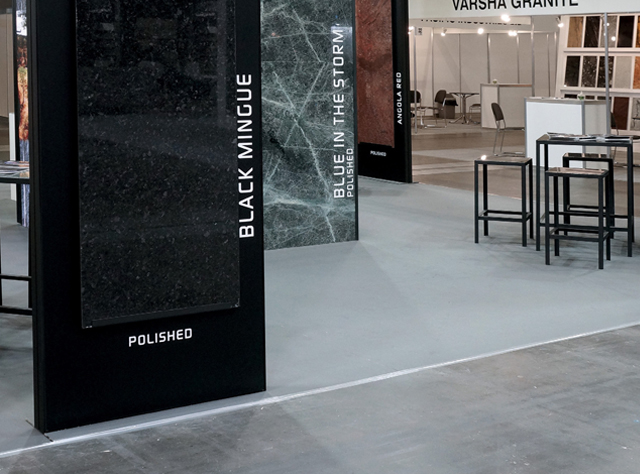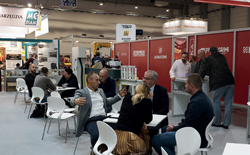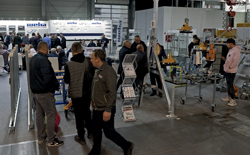NO TRADE FAIR NEED NOT MEAN THERE IS NOTHING TO DO

Trade fairs have a very long history. It is sufficient to point out that in Poland the first mention of fairs appears in records from 1065. The right to organize fairs used to belong to the basic privileges of medieval towns. Sometimes fairs were held once, sometimes twice a week. Back in those days, it was possible to define trade fairs as a form of selling and buying.
With the birth of capitalism, trade fairs evolved quite quickly. In place of the commodity fairs, there appeared “manufacturing exhibitions” and “general exhibitions” – as they were called back then. These were, in contemporary terms, “trials” and “patterns” fairs. The first twenty years of the 20th century were the time of establishing the largest exhibition organization centres in Paris, Lyon, Milan, Cologne and many others. At that time, the fair in Poznań was also established (1920). It turned out that this way of establishing trade contacts was very well received. By 1923, there were already 454 trade fair centres in Europe. Later, the concept of trade fairs as a place for direct contacts was exploited by the developing marketing and thus the trade fairs we know today were created. Today, there are about 2,500 large trade fair centres in the world. The organizers, in majority, are commercial companies. So much for the introduction.

Contemporary fairs are exhibitions where producers and distributors of goods present their offers and visitors sign contracts. It is also a place where you can promote specific directions of development, both in making projects and design. The question arises: to what extent have such events been attractive to all participants recently?
Fairs developed dynamically under certain external conditions. They did well in a time when communication and transportation were largely limited, and people highly valued the possibility of face-to-face contact, which was far more than a rather mediocre phone call.
Communication technologies have made great progress in recent years. Today´s possibilities of presenting an offer were unknown in the past. Companies have websites that are sometimes very complex, they publish on the web, not only technical parameters, offers and photos, but also videos and interactive presentations. As for the communication itself, there have also been some major changes. Modern technologies allow for video calls to be made between interlocutors, so the feeling of direct contact is almost real.
However, it is the fact that in the context of technological changes, organizers fairs did not particularly seek new ways for attracting visitors to participate in the fair, and, consequently, also for the exhibitors. There is always a certain standard of the offer: a banquet, a few lectures, an exhibition, sometimes a keynote lecture given by a prominent personality … There is clearly no interesting and consistently implemented mission of the organization – some clearly defined purpose of activity. The changes have not occurred from year to year. It was a process that took many years. In our industry, probably only the Italian producer Marmomac did the job. It focused heavily on supporting and presenting new ideas in design and technologies that enable their implementation. It has also been involved in many activities supporting the stone industry.

Trade fairs certainly present an opportunity to “physically” touch the offered goods. And this was probably a justification for the strategy chosen by most of the exhibition organizers: to sell as much exhibition space as possible at the lowest cost. But is the opportunity for customers to “touch” the offer worth the high costs of participation in the fair? One cannot forget about the already mentioned face-to-face meetings. A quite important element that attracts visitors to the fair is the need for direct social contact. When visiting the exhibition, we meet a lot of friends whom we see only occasionally. Such meetings belong to the highlights of the fair. It is possible to talk face to face. There is also a chance to exchange experiences. And the relaxed atmosphere is conducive to sharing secrets that are rarely discussed on the phone.
Source: Kurier kamieniarski
Author: Dariusz Wawrzynkiewicz | Published: 19.11.2020
